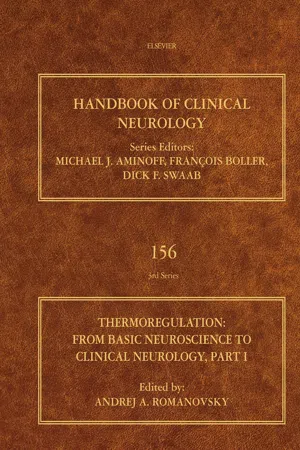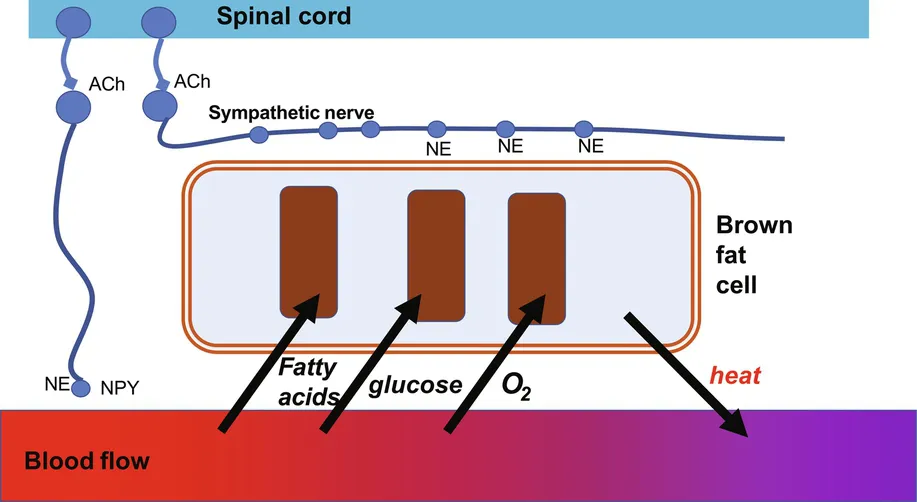
- 496 pages
- English
- ePUB (mobile friendly)
- Available on iOS & Android
About this book
Thermoregulation, Part I: From Basic Neuroscience to Clinical Neurology, Volume 154, not only reviews how body temperature regulation changes in neurological diseases, but also how this aspect affects the course and outcomes of each disease. Other sections of the volume review three therapeutic approaches that are aimed at manipulating body temperature, including induced hypothermia, induced hyperthermia and antipyretic therapy. The book is comprised of nine sections across two volumes, five dealing with the basic aspects of body temperature regulation and four dealing with the clinical aspects. Basic sections cover the Thermoregulation system, Thermoreceptors, Thermoeffectors, Neural pathways, and Thermoregulation as a homeostatic function.In addition, the book covers the physiology and neuroanatomy of the thermoregulation system and provides descriptions of how the regulation of body temperature intervenes with other physiological functions (such as sleep, osmoregulation, and immunity), stress, exercise and aging. Basic sections serve as an introduction to the four clinical sections: Body Temperature, Clinical Significance, Abnormal Body Temperature, Thermoregulation in Neurological Disease and Therapeutic Interventions.- Presents a clear, logical pathway from the fundamental physiology of thermoregulation, through neurobiology, to clinical applications and disease- Enables researchers and clinicians to better understand the value of temperature measurement in disease and the use of temperature as a therapy- Integrates content from a broad field of research, including topics on the molecular physiology of temperature receptors, to the management of accidental hypothermia
Frequently asked questions
- Essential is ideal for learners and professionals who enjoy exploring a wide range of subjects. Access the Essential Library with 800,000+ trusted titles and best-sellers across business, personal growth, and the humanities. Includes unlimited reading time and Standard Read Aloud voice.
- Complete: Perfect for advanced learners and researchers needing full, unrestricted access. Unlock 1.4M+ books across hundreds of subjects, including academic and specialized titles. The Complete Plan also includes advanced features like Premium Read Aloud and Research Assistant.
Please note we cannot support devices running on iOS 13 and Android 7 or earlier. Learn more about using the app.
Information
Brown adipose tissue as a heat-producing thermoeffector
* Correspondence to: Jan Nedergaard, PhD, Department of Molecular Biosciences, The Wenner-Gren Institute, Stockholm University, Stockholm 106 91, Sweden. Tel: + 46-7049-48955 email address: [email protected]
Abstract
Keywords

Measurement of brown-fat-derived heat production in intact animals
Direct methods
Indirect methods
Table of contents
- Cover image
- Title page
- Table of Contents
- Copyright
- Handbook of Clinical Neurology 3rd Series
- Foreword
- Preface
- Contributors
- Section I: Thermoregulation system
- Section II: Thermoreceptors
- Section III: Thermoeffectors
- Section IV: Neural pathways
- Section V: Thermoregulation as a homeostatic function
- Index